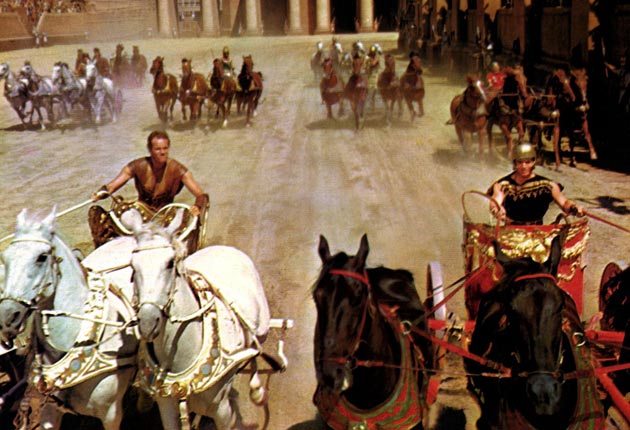There was considerable excitement among archaeologists when, in 2005, a firm of housing developers unearthed the only Roman chariot-racing track in Britain, on a site in Colchester, Essex.
Five years later, residents have less than a month to save the site. The racetrack is still hidden beneath local roads, gardens and old army buildings, but campaigners are hoping to buy a large Victorian garden which covers the key part of the circuit.
Buried beneath are eight stone enclosures, originally having been fitted with wooden double doors, like giant greyhound racing traps. The land is the garden of a listed but derelict sergeants' mess, which will become an exhibition if the campaign succeeds. If it fails, however, the building will become apartments, and the garden will be the apartment block's private land again.
For almost 2,000 years, the 350-metre outline of the track has remained intact. The site lay undiscovered until the Colchester Archaeological Trust (CAT) began excavating after the Ministry of Defence sold the barracks for housing in 2005. Archaeological digs suggest the racetrack was built in the early 2nd century, and lasted about 150 years before falling out of use, perhaps because a day at the races became prohibitively expensive for the local gentry – crowds received free admission and also expected to receive gifts.
CAT has since traced long stretches of the perimeter, complete with banked seating for up to 15,000 people. The bases of start and finish posts have also been discovered, as well as elaborate fountains that served as lap markers.
Wendy Bailey, chairwoman of Destination Colchester, said a campaign had received a boost with a £30,000 council contribution. "This has really caught the imagination of ordinary local people," she told The Guardian. "We're doing a fundraiser at the local football ground, where one man said: 'This was like their football to the people of those days.' We are extraordinarily grateful to the council, but I still don't think the authorities charged with protecting it really get how important this heritage is to local people."
Tony Robinson, the actor and presenter of Channel 4's Time Team, has supported the campaign, as have the politician Tony Benn and the historian Dan Cruickshank. Mr Robinson said the circus was an incredible find. "I hope local people, politicians and businesses will all play their part in ensuring as much of it as possible, including the starting stalls, is made secure and accessible for future generations."
If the campaigners are to buy the land and have the site taken off the market, they will need to find £200,000 by the end of February. The sergeants' mess hall building, which they hope will be bought by the archaeology trust and a consortium of community groups and businesses, will cost a further £550,000
More than £120,000 has so far been raised in just a few weeks, almost entirely in small donations from the public. Colchester United flashed up the campaign poster on their screens during a recent match.
Chariot racing was very popular with the Romans, as immortalised by Charlton Heston in the movie adaptation Ben-Hur, but only four tracks have been found in the former north-western provinces of the old Empire. Colchester was once the capital of Roman Britain, and now claims to be Britain's oldest town. The Roman garrison in the town would have provided an enthusiastic audience.

Join our commenting forum
Join thought-provoking conversations, follow other Independent readers and see their replies
Comments